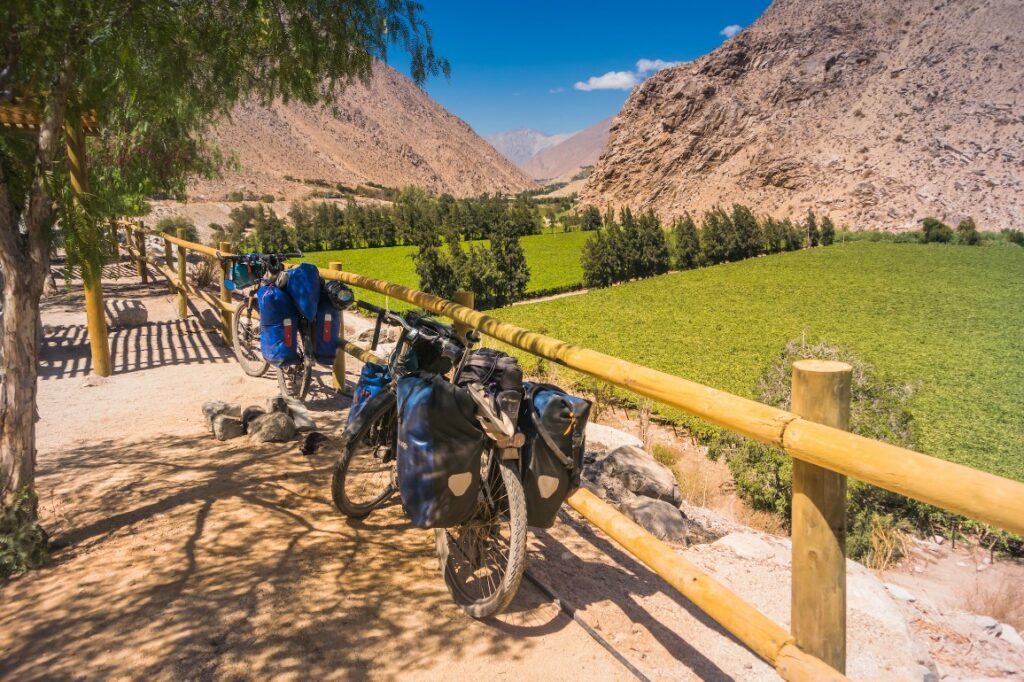If you practice sustainability at home, there’s no reason to stop when you hit the open road (or air). Sure, traveling and green living don’t always go hand-in-hand. Air travel is particularly devastating for the planet, with a single flight producing three tons of carbon dioxide (CO2) per passenger. But many aspects of travel can be good for the earth — it can help increase the visibility of fragile ecosystems, provide support for local communities and enable those communities to build their economies without harming the natural environment.
If you really want to see the world and all its natural wonders, there are plenty of ways to do so without harming Mother Nature’s treasures. In fact, it could be as easy as lathering up with a shampoo bar from The Earthling Co. or donating to a carbon offset program.
Here’s everything you need to know about being a responsible traveler.
What Is Sustainable Travel?

Source: ipsos.com
Sustainable travel is all about seeing and experiencing the world while minimizing the negative impact we have on the planet. Every small, travel-related decision we make — from our mode of transportation to the toiletries we pack — can have a significant impact on the environment, for better or worse. By going green with our travel practices, we can do our part to ensure that future generations will get to experience the same wondrous beauty of Mother Nature we enjoy today.
But why should we go to the trouble of incorporating sustainable practices into our travel plans? For starters, the travel industry is a considerable source of global carbon emissions, contributing somewhere between eight to 11 percent of total greenhouse gas emissions, according to a report from the World Travel and Tourism Council. Decreasing our collective travel impact could greatly reduce the amount of CO2 and other greenhouse gases we emit into the air, thereby lessening the impact of climate change around the world.
Besides, making sustainable travel plans doesn’t need to add more stress and worry to your plate. In fact, it could make your next adventure simpler, easier, and, potentially, more affordable!
How to Travel Sustainably
Here are five tips for reducing your tourism carbon footprint and treading lightly while traveling the world.
1. Choose a ‘green’ destination
Planning a local trip, such as a family day trip to the beach or a weekend getaway at a romantic inn, is almost always the “greener” way to travel since international flights emit more CO2 into the atmosphere. (It’s also significantly less expensive!) But if you’re itching to travel abroad, some destinations are more sustainable than others. For instance, the latest Environmental Performance Index ranks Denmark, Luxembourg, Switzerland, the United Kingdom and France as the most sustainable countries in the world, indicating that travelers may have an easier time sticking to their green principles in these destinations. Non-European countries such as Costa Rica, Bhutan and Ecuador are also worth considering. These developing nations are rich in natural wonders and becoming increasingly well-known for their sustainable cultures and traditions.
2. Find sustainable lodging

Source: greenbiz.com
Good news — you don’t need to stay in a yurt in the middle of nowhere to travel responsibly. Many hotels and resorts are taking sustainability more seriously these days.
Even so, it can be difficult to tell which hotels and resorts are really going green for the sake of the environment and which ones are just putting on an act to make money. To avoid being a victim of “greenwashing,” visit the hotel’s website and check for third-party systems of environmental certification, such as LEED, GreenKeys and Green Seal.
Homestays are another eco-friendly option to consider. In addition to being more affordable and sustainable, staying with a local family can be a great way to experience the culture and traditions of the country you’re visiting and ensure your money goes directly to the local community.
3. Pack with care
The heavier your luggage is, the lower the car or plane’s fuel economy will be, and the more greenhouse gases are emitted into the atmosphere. So, keep your bags light and pack responsibly. You can keep your luggage weight to a minimum by packing a capsule wardrobe and sticking to a packing checklist.
While you’re at it, try to pack eco-friendly products with you. For instance, instead of swiping on conventional deodorant, use a plastic-free deodorant that comes in a paper tube. Solid toiletries, such as natural body soap bars and shampoo bars, are similarly eco-friendly and much easier to travel with than liquid toiletries.
4. Consider alternative modes of transportation

Source: thehindubusinessline.com
While most forms of transportation contribute to greenhouse gas emissions, planes are particularly polluting and problematic. Compared to cars, planes burn more fuel per journey, and therefore produce more CO2.
Your best bet for sustainable travel is to skip the plane and travel closer to home via car or train. However, if you must fly to your destination, try booking a non-stop flight (planes burn the most fuel during takeoff and landing) and flying economy, which maximizes the number of passengers on each flight. You can also purchase airline carbon offsets to reduce your footprint.
Here are a few more ways to lessen your impact:
- If you’re staying in the heart of the city, consider renting bicycles to get around.
- Can’t ride a bike in town? Take public transit instead.
- If you’re renting a car, choose an electric vehicle.
- Consider car-sharing with friends and family.
5. Travel off the beaten path
For countries with fragile ecosystems, overtourism is a growing problem. When too many tourists flock to a particular destination or attraction, it can increase trash, pollution, and habitat loss, threatening wildlife and diminishing the quality of life for local communities. That’s why it’s important to consider destinations and attractions that are less crowded, but just as exciting.
For example, instead of visiting tourist-heavy Dubrovnik in Croatia, consider staying in the lesser-ventured Pelješac peninsula — a beautiful, mountainous strip of land that extends into the Adriatic Sea just above Dubrovnik.
Or, consider traveling to hot spots such as Venice and Paris outside of peak months. Venice is particularly beautiful and romantic in the wintertime — plus, traveling during the low season usually translates to fewer crowds and lower prices.
Be a Good Steward
From supporting local communities to increasing our appreciation of nature, there’s no question that traveling can have a positive impact on the planet. But when we don’t pay attention to our environmental footprint, our adventures can end up doing more harm than good. With these tips, you can be a good steward of the earth while also experiencing the world and all its beauty.



























